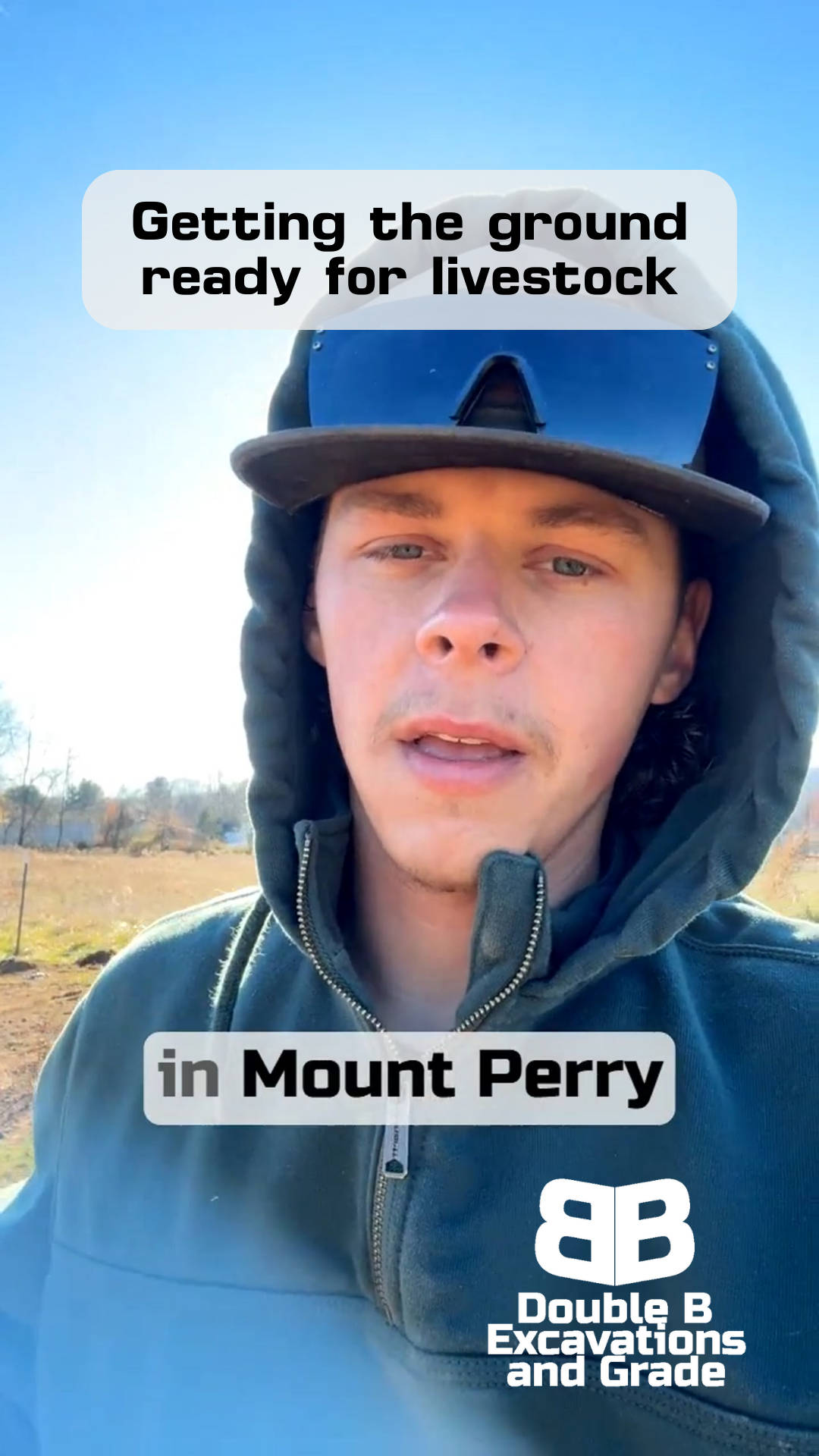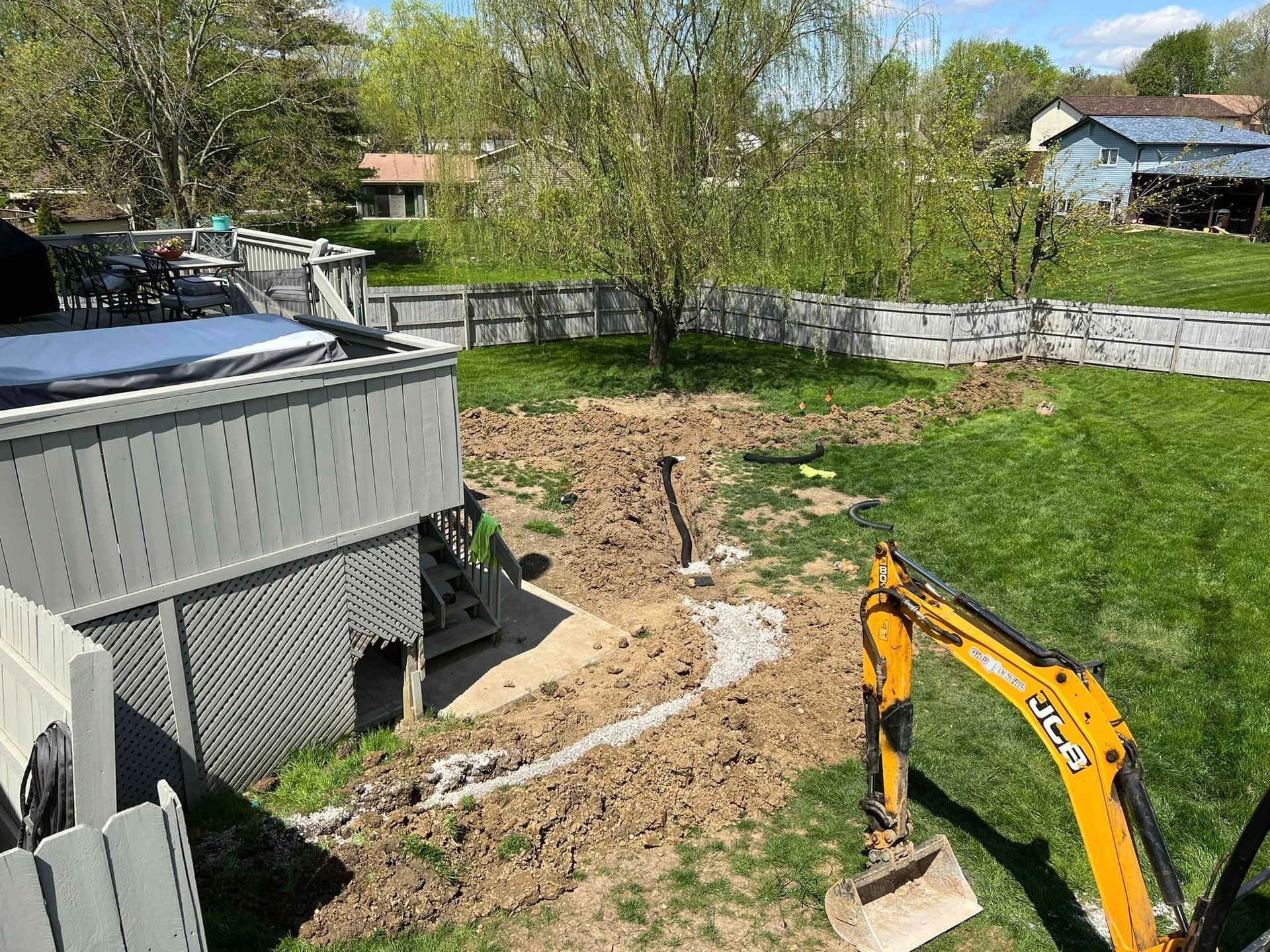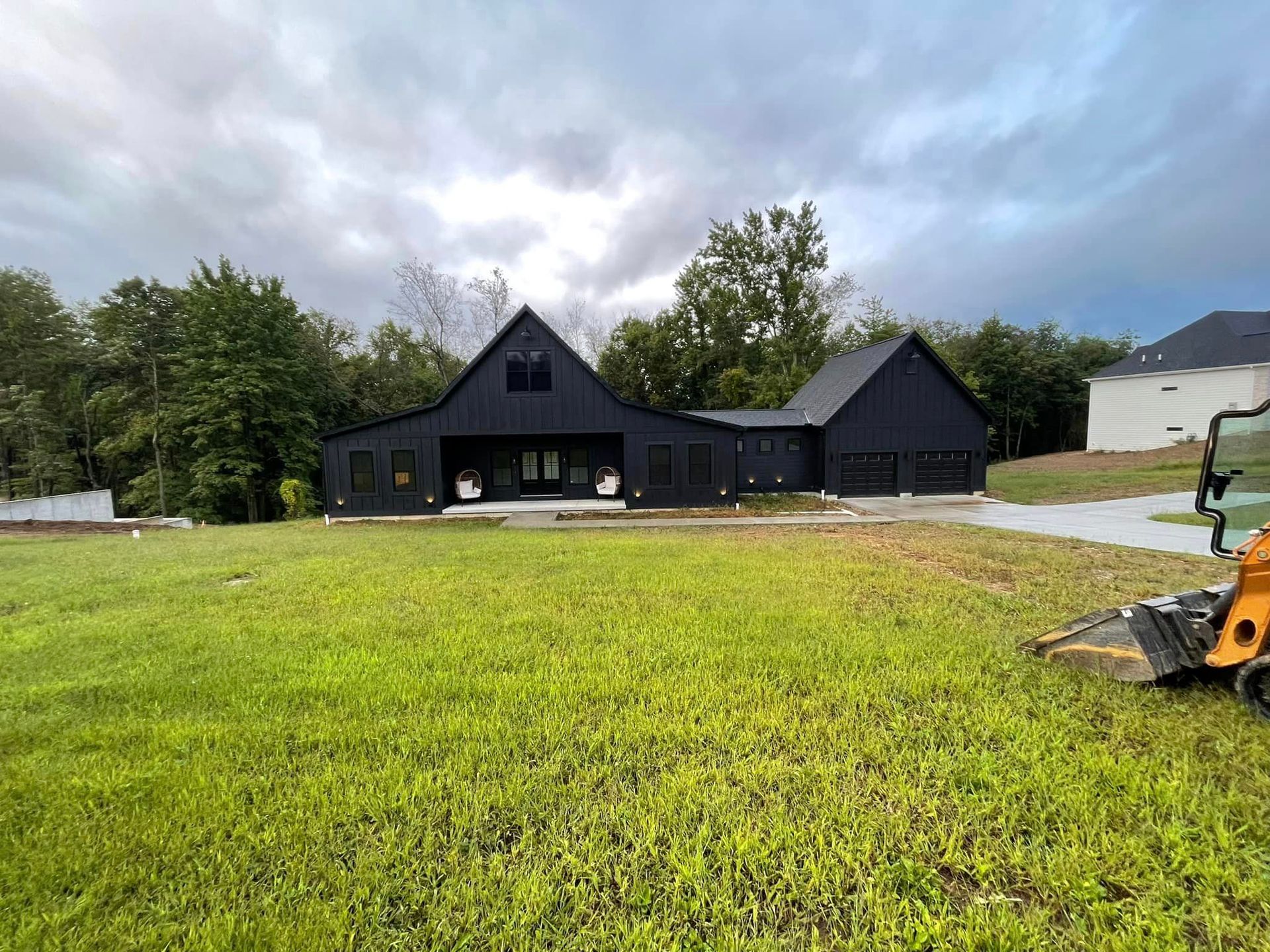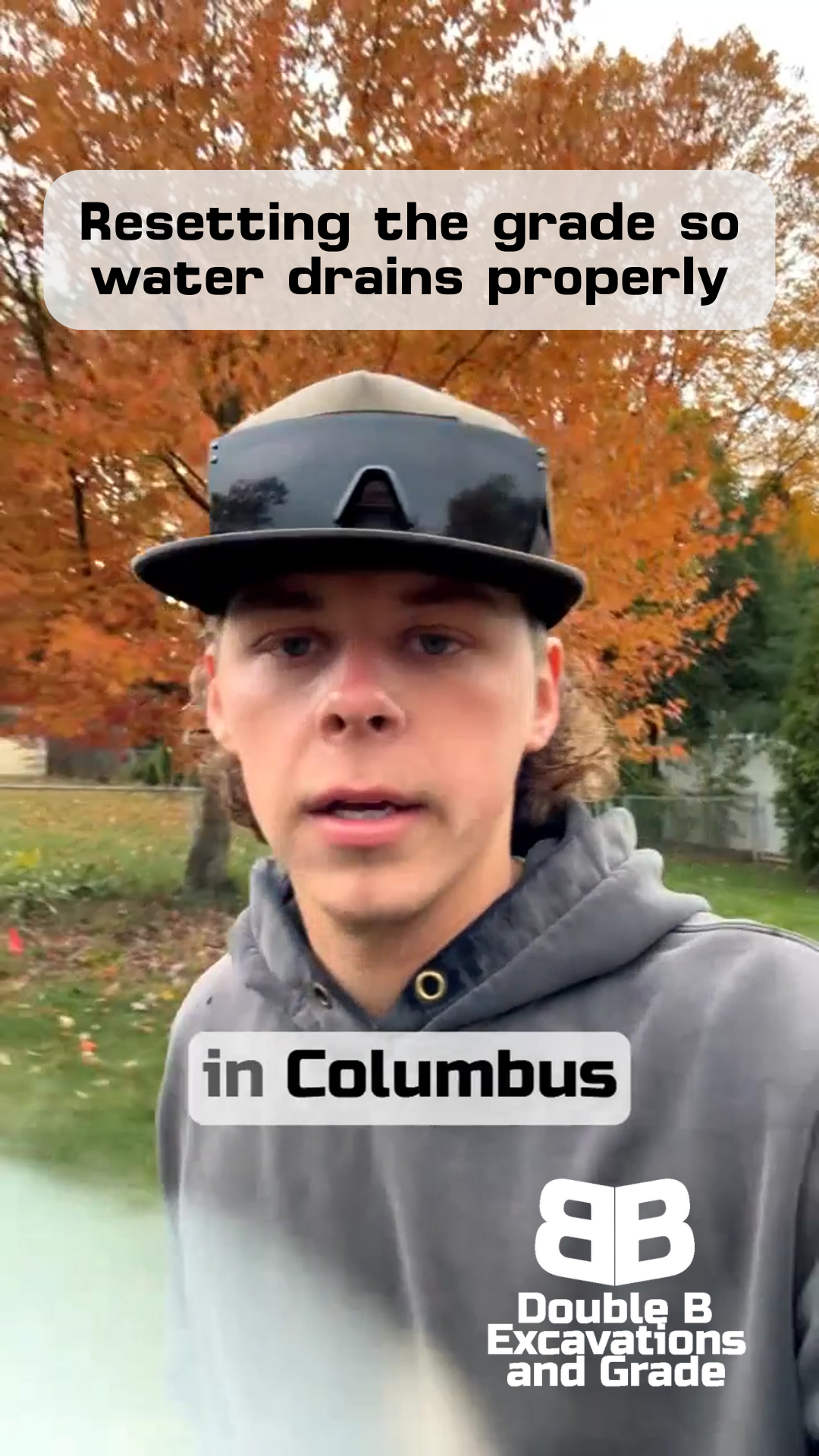Beyond Basic Gravel: How We're Building a Long-Lasting Driveway in Westerville
Double B Excavations & Grade LLC
Gravel That Holds Up
THE HIDDEN WORK THAT MAKES A DRIVEWAY LAST
Out in Westerville this week, we're tackling day two of what might look like "just another gravel driveway" to passersby.
But there's a big difference between throwing down some basic gravel and building a driveway that's going to last for years to come. Let me show you what I mean.
When most people think about stone driveways, they picture a truck dumping some gravel and calling it a day.
That might work for a while, but give it a few months of regular use, and you'll start seeing the problems - uneven surfaces, loose stone everywhere, and edges that just won't stay put.
That's why we take a different approach.
Welcome to Double B!
Project Overview
Here's what we're working with in Westerville: We've already laid down 30 tons of stone, and we're not done yet. If that sounds like a lot, it is - but there's a reason for every pound. We're using different types of stone, starting with 304s, and we'll be bringing in 57s later today. You can actually see where we've laid the first layer because of the color change in the stone.
This isn't a one-and-done job. We're taking our time, spreading the stone, rolling it, then spreading and rolling again. Some might call this overkill, but this attention to detail is what separates a driveway that lasts from one that needs constant maintenance. By the time we finish this project, our client will have a driveway that not only looks professional but will stand up to years of daily use.
The Stone Selection Process
Let's talk about why we're using different types of stone - because this isn't just about throwing down whatever's cheapest. Our first layer is what we call 304s. You can spot it easily by the color change on the driveway. This stone provides an excellent base layer because of how it packs together. Think of it like building blocks that lock into place when properly compacted.
Later today, we'll be bringing in 57s. This stone works differently than the 304s, but they complement each other perfectly. While the 304s create our solid foundation, the 57s help with drainage and surface stability. It's like building a puzzle where each piece has its own job to do. Together, they create something that's going to last.
Our Installation Method
Here's where attention to detail really matters. Watch any experienced driveway installer, and you'll notice we don't just dump and run. We're constantly spreading, rolling, spreading again, and rolling again. Why all the extra work? Because proper compaction is the secret to a long-lasting driveway.
Those edges you see? We're especially careful with those. A straight, tight edge isn't just about looks - it's about keeping your stone where it belongs instead of scattered across your yard. That's why we take the time to roll the edges multiple times, making sure everything's locked in place. You might notice we've got a pretty straight line going along one side. Even though the scraped-back area creates a bit of an illusion because there's no grass there, that edge is straight as an arrow.
Some contractors might skip these steps to save time, but we've seen too many driveways fail because someone rushed through the process. When you're paying for a stone driveway, you deserve one that's going to hold up for years, not months.
Quality Control Steps
Every time we work on a project like this Westerville driveway, we've got a mental checklist running. You might see me stepping back, looking down the line, or checking edges throughout the day. That's because we're constantly checking our work - not just at the end.
Take those straight lines we mentioned earlier. Sometimes what looks straight at first glance isn't quite there when you really look at it. That's why we use the existing landmarks, like where the old gravel meets the grass, as reference points. It might look like a simple thing, but these little checks make a big difference in the final product.
Why These Details Matter
Listen, we understand that most folks just want a driveway that works. But here's what years of experience has taught us: taking shortcuts never pays off. That extra time we spend on proper stone selection, multiple passes with the roller, and edge detail? It's all about preventing problems before they start.
A properly built stone driveway shouldn't need constant maintenance or regular stone replacement. It shouldn't wash out during heavy rains or develop ruts after a few months of use. When you do it right the first time, you're actually saving money in the long run.
Closing
By the end of today, this Westerville project will be complete, and we'll have transformed what was once an uneven, spreading gravel driveway into something that's going to serve this property for years to come. The difference might not be obvious to everyone driving by, but the homeowner will notice it every time they pull in.
Looking Forward
If you're considering a stone driveway for your property, take the time to understand what goes into doing it right.
Whether you're in Westerville or anywhere else in central Ohio, we're always happy to walk through the process and explain why these details matter.
Because at the end of the day, we're not just laying stone - we're building something that's meant to last.

